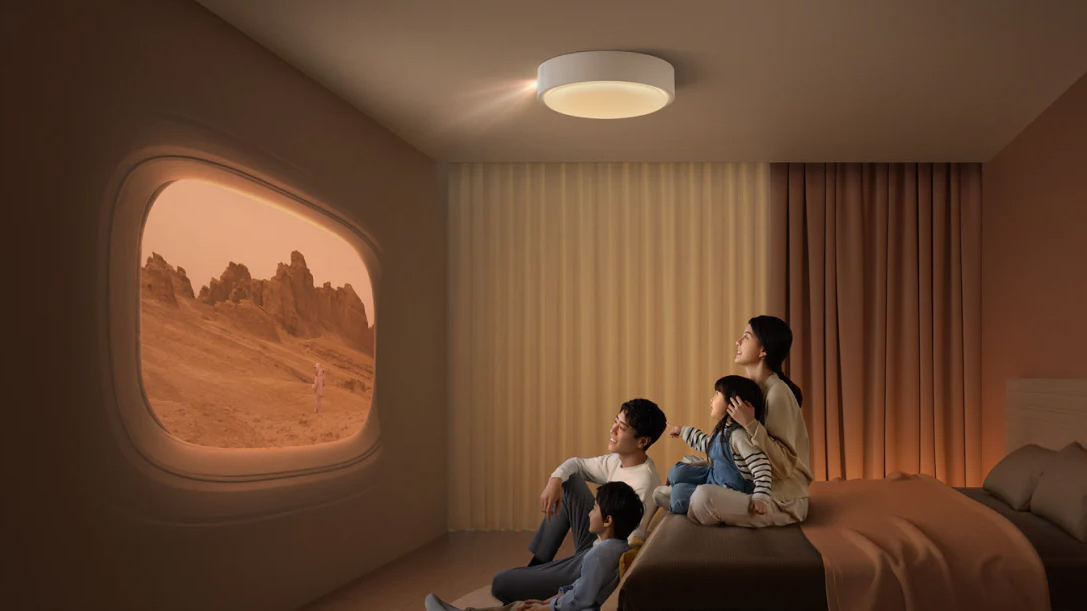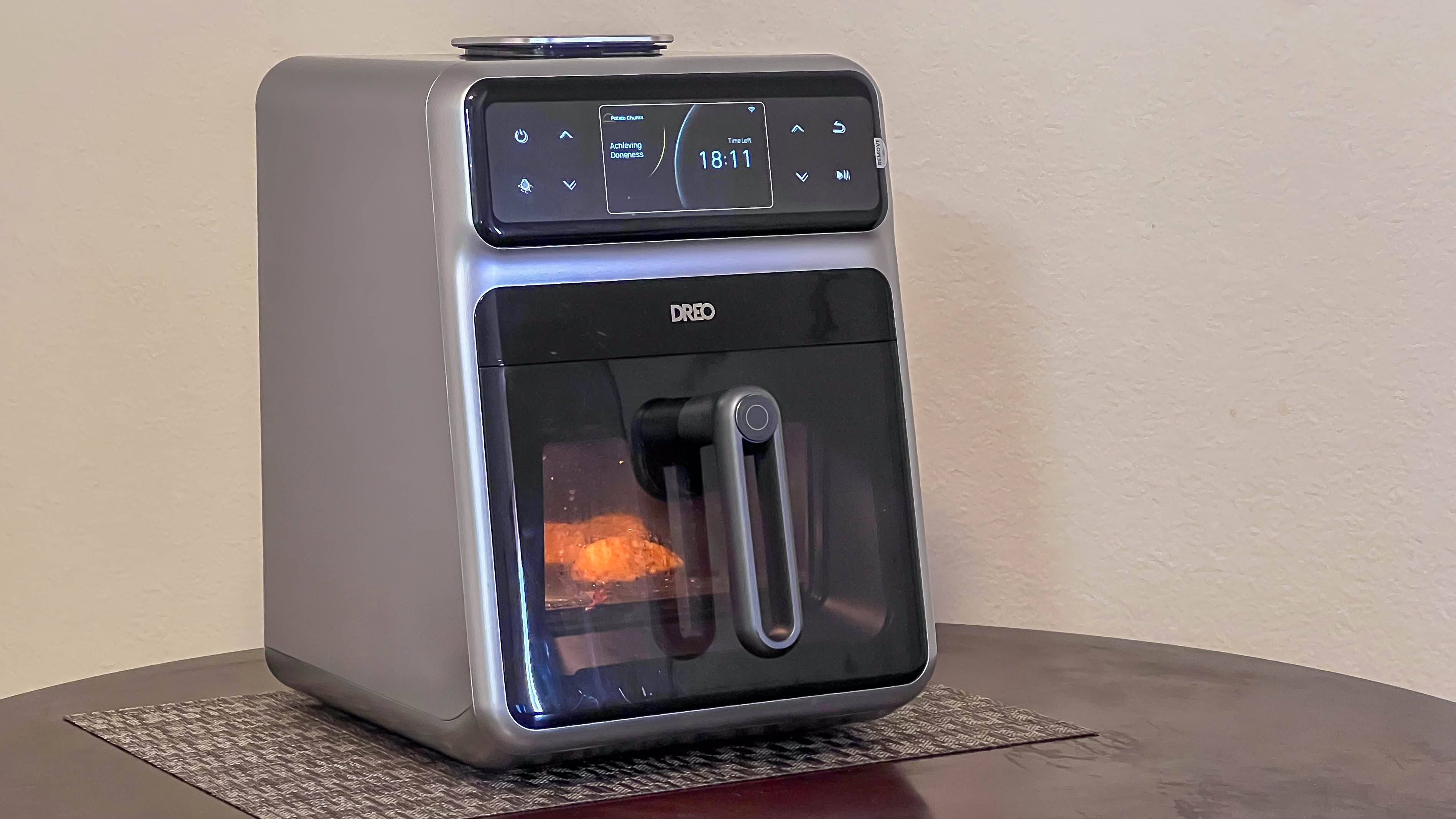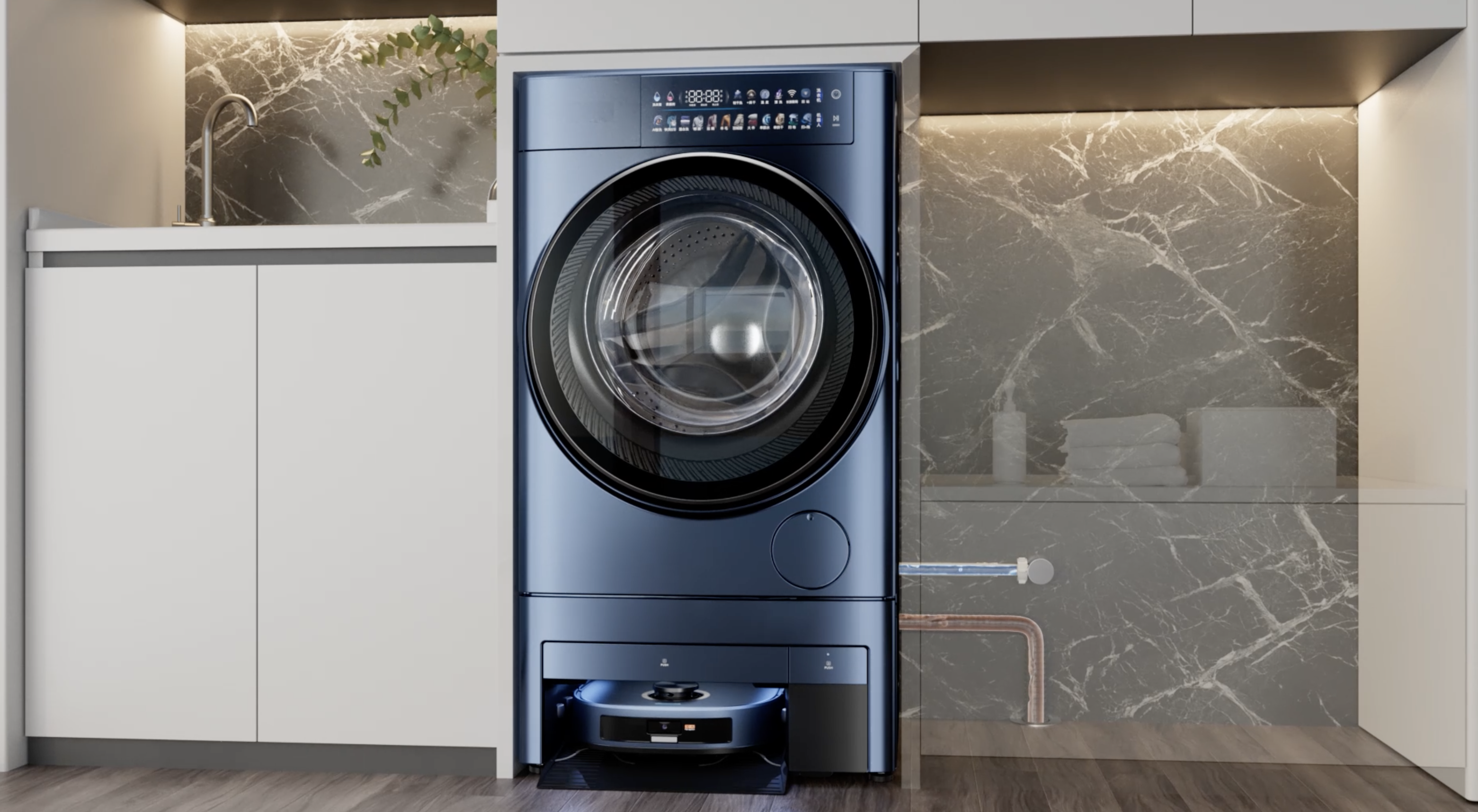Doing more with less: how smart appliances are becoming multi-functional in 2024
A new slew of multi-tasking smart appliances will let you do more with less in 2024

Multi-functionality isn’t exactly a novel concept in tech. It’s not even a new concept in the home – you need only look at the best multi-cookers, the best smart displays and the best smart TVs to realize that. It has, however, been underutilized, especially in home appliances and devices, which isn’t surprising given that the more products you buy, the more money manufacturers typically make.
Just look around your home: you’ve probably got a robot vacuum, a cordless vacuum, an air purifier, a separate fan for the summer, a washer unit, next to that a dryer unit, and the list goes on. Over in your kitchen, you might have an air fryer, a sous vide station, a separate oven, etc. These days, with all these admittedly amazing, life-simplifying smart products available to us on the market, it’s rather easy to end up with a slew of appliances that take up space, increase our carbon footprint, and can only do one thing at a time.
This year, it seems that many manufacturers are starting to move away from the excess and finding a lot more value in multi-functionality. At least, it’s what I’ve noticed at CES 2024 where a surprising number of manufacturers showcased their entries into the growing 2-in-1 fray. And this trend could be a promising future for how we use (and invest in) smart appliances.

2-in-1 smart appliances are trending
Though there were several trends in the appliance space that came out of CES 2024, the one thing that stood out to me was multi-functionality.
Two such products that fit this new mold were the Eureka 8B appliance, which is essentially a full-sized washer-and-dryer with a robot vacuum in the base – a pretty ambitious undertaking - and the XGIMI Aladdin, which is a ceiling-mounted projector that also functions as a ceiling light, allowing you to maximize the space it’s occupying. There’s also Samsung’s Ballie, which is a robot assistant that not only helps you manage your smart home devices and smart appliances but also functions as a projector.
Over in the kitchen space, several multi-functional ovens were showcased, including the Revolution Cooking’s Macrowave Oven which boasts a patented toasting technology that allows it to work as a microwave and a convection oven, and the Panasonic HomeChef 4-in-1 multi-oven that functions as a microwave, air fryer, broiler, and convection oven.
Meanwhile, at the Dreo booth, they’ve launched a 2-in-1 air purifying tower fan that’s set to hit the shelves on March 25th. The thing that separates this from existing air purifier fans out there is that it comes with two motors in one relatively compact form factor so that both the air purifier and the fan can operate independently of each other. As someone who currently has an air purifier and fan that blows air in my face and person in the middle of winter, it’s certainly a very appealing prospect.
Sign up for breaking news, reviews, opinion, top tech deals, and more.

Dreo is leading the way
It’s not the first time Dreo has explored the multi-functional game, however. Although this rising newcomer – the company started in 2021 – has its roots in the fan and space heating industry, it’s now implementing what it calls its “Go Strategy,” which consists of three things: go premium, go multi-functional, and go deeper.
“Most companies are going broader,” says Joshua Gunn, Dreo’s VP of Sales, “They want to have a product for every single application. The problem with that is you get way too many products in a portfolio, and really what we want to do is stay focused.”
According to Gunn, “When you look at your house, the last thing anybody wants to do is have a bunch of different appliances that they’re pulling out all season long – heaters, tower fans, things on your countertops. Our goal in all of this is [to know] where we can combine our appliance function into one fun factor.”
This very strategy already produced the Dreo ChefMaker, one of the very first multi-functional kitchen appliances on the market (outside of the traditional multi-cookers that had a hot moment a couple of years back) that can do several cooking techniques in one unbelievably compact form, and has earned a place in our roundup of the best air fryers. It also gave us the Dreo Smart Wall Heater, which not only solves most of the issues we have about space heaters but can also function as a fan so you don’t have to put it away in the warmer months.
That’s just the beginning. At CES 2024, the brand also talked about an upcoming 3-in-1 milk frother designed to produce a microfoam that you would utilize for latte art, improving on the existing solutions that are out there.
So while many of the other companies, big and small, have a hat or two in the ring, multi-functional is this brand’s main focus in the present as well as the foreseeable future.

Is it a good thing?
Absolutely. The space you could be saving in your home alone is a compelling reason to go for home and kitchen appliances that are multi-functional.
There’s also the fact that you’ll be saving money and energy. Take the best 2-in-1 laptops, for example. Despite their name, these laptops can function as your typical laptop, a presentation device, a streaming device, and a tablet. And while they tend to be a little pricier than the traditional laptops, you don’t have to spend more money to get a separate tablet. It also means that you won’t have to charge two or more devices, more likely lowering your energy consumption.
Of course, it’s too early in the game to say that all these new multitaskers are up to par with the individual products they could replace. Honestly, I’m a little skeptical about Eureka’s robot-vacuum-cum-washer-and-dryer. Will the individual parts work as efficiently to make the sum a worthy investment? We already know that existing washer/dryer units generally aren’t as effective when it comes to the drying bit. And will it, in the long run, save you money and energy?
However, if there’s one thing the Dreo ChefMaker has shown me is that it can be done. It’s just a matter of implementing those ideas well, which admittedly could take time as with any new piece of kit.
It could be very good for the manufacturers themselves. It is undeniably tough out there for brands, given the sheer number of competitors in the home and kitchen appliance space. Also, if a brand’s products address two or three needs in a single form factor, how exactly can it ensure profitability?
The way Gunn looks at it, it’s all about customer loyalty. “We’re very focused on not just creating a bunch of products, but creating the right products, the right solutions for our customers. We think that customer loyalty comes from delivering an exceptional product that answers the problems of our customers. By going premium and also going multi-functional, we think we can take retail for a product that delivers different solutions, stay very profitable for our company, and exceed our customers’ expectations.”

But will these help reduce your carbon footprint?
Only time will tell. In a way, because you’re buying fewer products, and because you’re getting an appliance that can perform the tasks traditionally done by two or more products, it is reducing your carbon footprint.
However, it’s not that simple. The process by which those new products are manufactured, produced, and packaged – as well as their energy consumption – has a huge impact as well. Several big companies have been ramping up their sustainability efforts, some closer to their neutral carbon footprint target than others. Sustainability is still not high on the list with smaller companies, though, particularly because, as sad as it is to say, it’s cheaper to not go green, even in this day and age.
Unfortunately, it still boils down to consumers themselves. If you care about minimizing your carbon footprint, it’s still important for you to compare and contrast. Not all companies share their sustainability efforts or their carbon emission reporting with the general public, but you can at least see if the energy consumption of the multi-functional appliance you’re looking at is better than the total energy consumption of the individual products it’s hoping to replace. That way, you can rest assured that you’re actually conserving energy in your home at the very least.
One thing's for sure, however. This new generation of smart appliances is a promising step in the right direction and could change the way we utilize those tools we have deemed essential in our homes.
I would love to see a robot that could manage my smart home, vacuum my floor, do my laundry, and air fry my lunch at the same time; possibly even answer my emails and incoming calls. But that's a probably topic for another decade.
You might also like

Michelle Rae Uy is the former Computing Reviews and Buying Guides Editor at TechRadar. She's a Los Angeles-based tech, travel and lifestyle writer covering a wide range of topics, from computing to the latest in green commutes to the best hiking trails. She's an ambivert who enjoys communing with nature and traveling for months at a time just as much as watching movies and playing sim games at home. That also means that she has a lot more avenues to explore in terms of understanding how tech can improve the different aspects of our lives.